
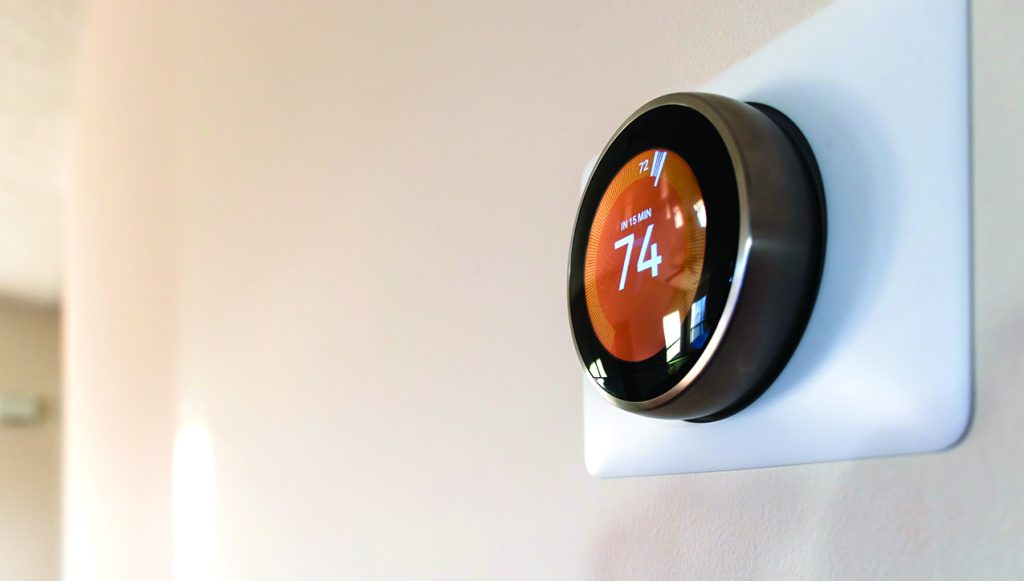
The Benefits of Energy-efficient Homes
Consumer efforts to be more eco-conscious are more and more noticeable. For proof of that, one need look no further than the increase in vehicle charging stations. Such stations are more accessible than ever and illustrate that consumer preference is increasingly leaning toward products that leave as small a carbon footprint as possible.
Another indicator of a growing interest in eco-friendly products is the popularity in energy-efficient homes. In fact, a recent survey from the National Association of Home Builders found that energy-efficient features are among the most sought-after "must-haves" among homebuyers. Among those surveyed, 83 percent desired Energy Star-rated windows, 81 percent wanted Energy Star-rated appliances and 80 percent preferred energy-efficient lighting.
Though eco-conscious sensibilities compel millions of homeowners to make their homes more energy-efficient, that's not the only reason to upgrade your home. The following are a handful of the many benefits of energy-efficient homes.
· Save money: Inflation was one of the biggest stories of 2022, as the cost of living rose dramatically in the wake of world events. According to data from the U.S. Bureau of Labor Statistics, inflation led to an overall 6.5 percent increase in prices. But that increase was dwarfed by the cost of electricity, which increased by 14.3 percent in 2022. Energy-efficient appliances can help homeowners overcome that spike, as the U.S. Department of Energy indicates upgrading to such products can help homeowners reduce their energy costs by as much as 30 percent.
· Improve resale value: As the NAHB survey indicates, modern homebuyers want energy-efficient homes. They're also willing to pay more for such homes. Research from the mortgage lender Freddie Mac found that homes with energy-efficient ratings sold for nearly 3 percent more on average than homes without such ratings.
· Live healthier: The benefits of energy-efficient homes aren't just economic, though health-related benefits certainly produce an economic incentive as well. According to the American Council for an Energy-Efficient Economy, insulation and air sealing protect individuals from heat waves and other ripple effects of climate change. The ACEEE notes that weatherization can improve indoor air quality and comfort, a notable benefit for asthma sufferers and seniors. In fact, the ACEEE estimates that integrating energy efficiency programs in homes could reduce seniors' risk for falls in their homes, potentially saving $2 billion in fall-related health care costs over the next decade, and improve asthma outcomes, which could reduce health care costs by as much as half a billion dollars.
Energy-efficient products and practices pay numerous dividends, making them a worthy expenditure for any homeowners looking to upgrade their homes.


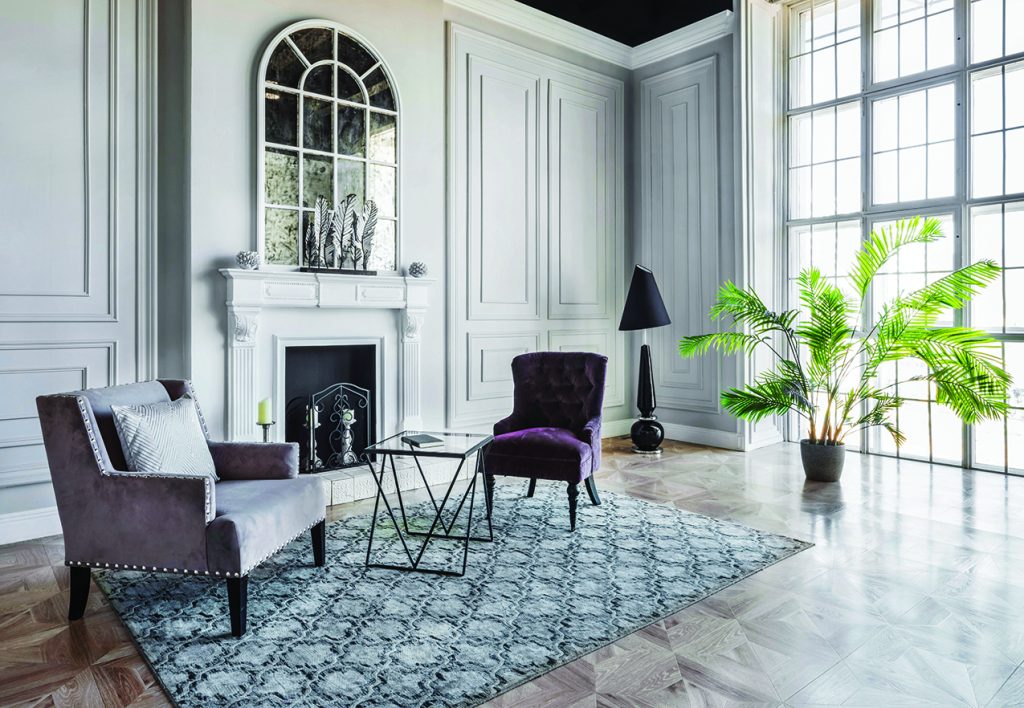
Design Ideas that Can Create a Peaceful Feel
Homes are often characterized as sanctuaries for their residents. A calm place to come home to after a busy day at work or school is often just what people need to unwind.
Certain design components can help individuals turn their homes into relaxing respites from the daily grind. With that goal in mind, individuals can consider these ideas to create a peaceful feel inside their homes.
· Paint with neutral colors. Wall colors can define the mood in a given room, and neutral colors have long been linked to a calming effect. Subtle shades like beige, taupe and light gray are known to create a relaxed vibe in a room, so these colors can be a go-to choice. Some people consider neutral colors a tad boring, so individuals concerned by that impression can limit neutral colors to rooms designated as sanctuaries, like a reading room, a spa bathroom or a bedroom.
· Employ natural light. Natural light also can help to establish a serene setting at home. Large windows that let daylight in can improve anyone's mood. A 2022 study from researchers at the University of Chile in Santiago found that the more natural light that entered a home, the happier people said they felt. Study authors even noted that the largest uptick in well-being was found among participants who lived in homes in which windows covered at least 40 percent of the dwelling's wall space. Opening blinds or curtains and, if possible, installing larger windows in a home can help to establish the relaxing, happy vibe individuals are aiming for.
· Utilize plants to set a peaceful tone. The United Kingdom-based Royal Horticultural Society notes that research has found that indoor plants can benefit psychological well-being. The RHS notes that improved mood and reduced stress levels are two benefits that indoor plants can provide. A good mood and less stress can help individuals establish the peaceful feel they're aiming for at home.
· Keep devices out of bedrooms. Watching television while lying in bed, scanning a smartphone before turning off a nightstand light and retiring for the night, or reading an e-reader instead of a print book at night can transform a bedroom from a serene setting into one that's overrun with stimuli. According to the Sleep Foundation, technology stimulates the mind, which can make it harder to fall asleep. In addition, blue light emitted by devices disrupts the natural production of melatonin, a hormone that makes it easier to fall asleep. That can negate any efforts individuals have undertaken to make their bedrooms as peaceful as possible. Designate bedrooms in the house as technology-free zones to ensure the peaceful vibe continues uninterrupted until everyone goes to bed.
A peaceful home makes for the perfect respite at the end of a busy day. Various design choices can help individuals establish a serene vibe throughout their homes.


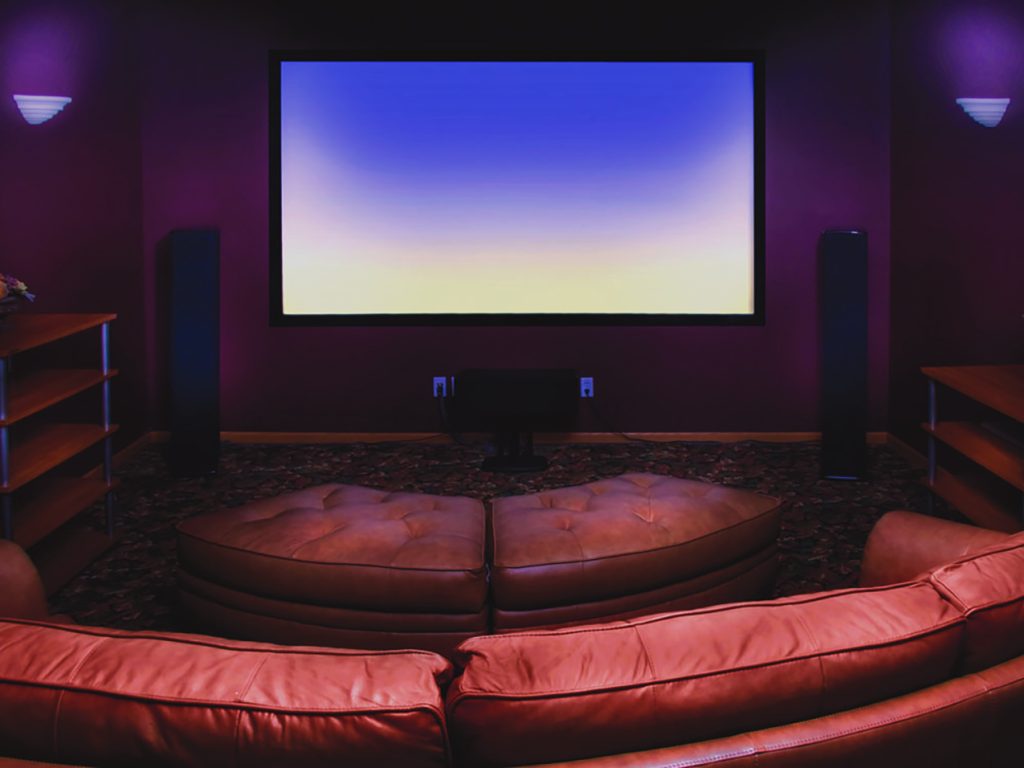
Equip a Home Theater with the Ultimate Features
Dedicated home theaters and the more diverse "media rooms" still command their share of real estate in homes. A report from the Business Research Company estimates that the home theater market size will reach $66.16 billion by 2027, with a 19.5 percent growth rate between now and then.
Home theaters can fall into a wide range of categories. Some media room enthusiasts embark on retrofitting spaces on their own, making equipping the room a do-it-yourself endeavor. Others interested in a state-of-the-art setup may leave the work to a professional, especially if it involves construction or installation of large equipment. Some things need to be kept in mind for those interested in putting in home theaters, especially if they want to create the ultimate home theater experience. Here is the gear to consider.
AV receiver
An AV receiver will process all the different input and output sources involved in a home theater setup. This includes Blu-ray, streaming devices, video games, screens, and speakers. The AV receiver should have enough inputs to play several sources.
Screen
Depending on the space and size of the room, a home theater may feature a traditional large screen television or a projector and projector screen for a more cinematic feel. According to U.S. News and World Report, some of the newest television technology comes by way of OLED, or organic light-emitting diode. OLED employs emissive technology that utilizes millions of pixels that emit their own light rather than relying on a separate backlight. Many people believe OLED displays are the best on the market today.
Surround sound
An immersive home theater audio experience requires surround sound. This includes a combination of floorstanding speakers, subwoofer, single center speaker, and possibly smaller side speakers to truly disperse sound around the room. Those who have small home theater spaces that do not necessitate surround sound can opt for a soundbar. Some soundbars use advanced digital sound to trick the ears into thinking there are speakers all around them.
Plush seating
Reclining on individual seating is one of the perks of going to the movies. Increasingly homeowners are designing their home theaters to include cinema-style recliners. Look for options at furniture retailers that include large armrests with cupholders and spaces for snacks. Some even have small LED lights for increased comfort moving around dark rooms. Homeowners with large home theater capabilities can offset seating and even place it on risers to simulate a traditional theater and improve the viewing experience.
Smart light fixtures
Utilize smart light bulbs in fixtures so that lights can be colored or dimmed appropriately depending on need in the media area, such as those from Philips Hue. Light strips can be run along the baseboards of the room to define the perimeter and give it that distinct movie theater feel.
Additional considerations for a home theater include a miniature vending machine, refrigerator, popcorn maker or small snack station for refreshments.


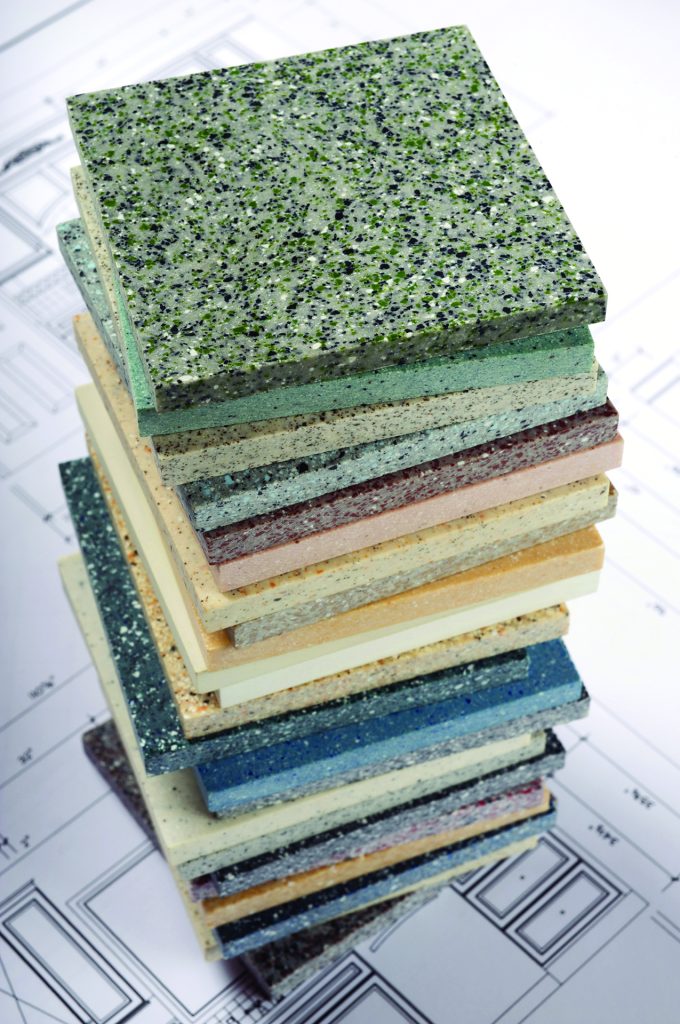
What to Know About Kitchen Countertop Materials
Kitchens are the busiest rooms in most homes. Kitchens have become more than just places to prepare meals, with many functioning as gathering spaces and even go-to dining spots in homes that do not feature formal dining rooms.
So much time spent in the kitchen makes it worthwhile to invest in these popular spaces. Kitchen renovations are high on many homeowners' to-do lists, and there's many decisions to make once they commit to redoing the room. When renovating a kitchen, homeowners will have to choose which countertop material they want to install, and the following rundown of popular options can help simplify that decision.
Quartz
Quartz is considered a low-maintenance and durable countertop material. The home improvement experts at This Old House note that quartz countertops are typically 94 percent ground quartz and now come with an honed, sandblasted or embossed treatment, which makes them appealing to homeowners with varying ideas on the ideal look of a kitchen countertop. Quartz can crack if it's not handled properly, and edges and corners can chip over time. Rounded edges can minimize the risk of chipping. Costs vary by location and product availability, but quartz typically costs about the same as natural stone.
Granite
Consumer Reports notes that no two slabs of granite are the same, and that uniqueness has long appealed to homeowners. Tests run by Consumer Reports found that heat, cuts and scratches did not harm granite, though this material, like quartz, can crack around edges and corners. Granite is a durable material that, if properly maintained, can last several decades. Granite also is nonporous, which makes it resistant to bacteria.
Laminate
Laminate countertops appeal to budget-friendly homeowners and Consumer Reports notes that they're easy to install. Home Depot also notes that laminate countertops come in a wide range of colors, textures and designs. Laminate countertops also are durable, which helps budget-conscious homeowners stretch their dollars even further. Laminate countertops are easily maintained, though it's also easy to permanently damage them with knives, so Consumer Reports recommends always using a cutting board when preparing meals on laminate.
Butcher Block
Butcher block countertops are among the more unique options homeowners may consider. Sometimes referred to as "wood countertops," butcher block countertops are made from wooden strips that are fused together. The home improvement experts at BobVila.com note that butcher block is among the more affordable materials, but the final cost will be dictated by location and availability. BobVila.com notes that butcher block countertops are highly sensitive to liquid, so exposure to moisture should be limited. Sealing butcher block countertops immediately after installation can help protect against bacteria and warping. Though butcher blocks can be high maintenance, many homeowners find the unique look is well worth the extra elbow grease.
Kitchen countertops can define how the room looks, and homeowners have many options to choose from when designing a new kitchen.


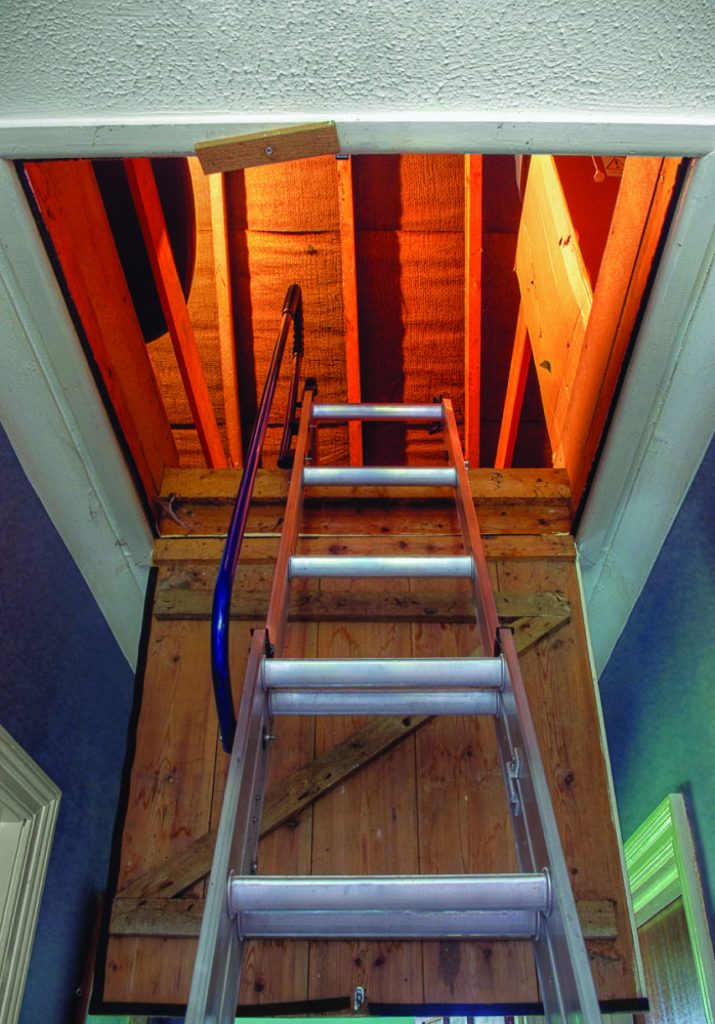
How Homeowners Can Turn Attics Into Livable Spaces
Houses typically feature various areas that are traditionally designed for storage, such as garages, basements and attics. However, with some renovation, these spaces can be transformed into livable areas.
Homeowners who would like to convert attics into livable spaces need to take certain things into consideration before starting an improvement project. While the attic may seem like it has plenty of room and is structurally sound enough to walk in, that's not necessarily so. To be converted into usable living space, an attic must be brought up to the standards of modern building codes, according to the design experts at Board & Vellum. Retrofitting beams and insulation can eat up available space in an attic. Thus, it is best to consult an expert to see if an attic can be converted.
Furthermore, an attic that was not initially designed as a room when the house was built can add extra "load" upstairs if it is converted. That could present certain structural problems. That means a structural engineer also must be consulted to see if adding beams, flooring and drywall will necessitate other changes elsewhere in the home to accommodate the extra load.
In order to have a functional attic room, building codes will dictate that it needs to be accessible by a full-size staircase. Also, it will need to have another exit in case of an emergency so that will likely be an accessible window, according to the home information site The Fill. Homeowners' budgets and renovation plans will need to factor into these considerations. Homeowners also are advised to check local permits to determine what else may be required to go forward. It is best to follow the rules. Lack of a permit for work can affect the ability to sell a home down the line.
Individuals also should plan for heating and cooling upgrades as the home will need to have ductwork installed in the attic, or at the least, a stand-alone heating and cooling unit. As heat rises, it can get quite warm in an attic, so ventilation and comfort should be considered. The attic will need to be wired for electricity for lighting and other needs. Air sealing and additional insulation can the attic space more comfortable as well. Consult with a qualified electrician and an HVAC technician and have an energy audit done to discuss needs.
Attic renovations can give homeowners more space in their homes, which can be used as offices, bedrooms or cozy corners. This is no small undertaking and all of the right steps need to be followed to ensure a legal, safe and successful renovation.


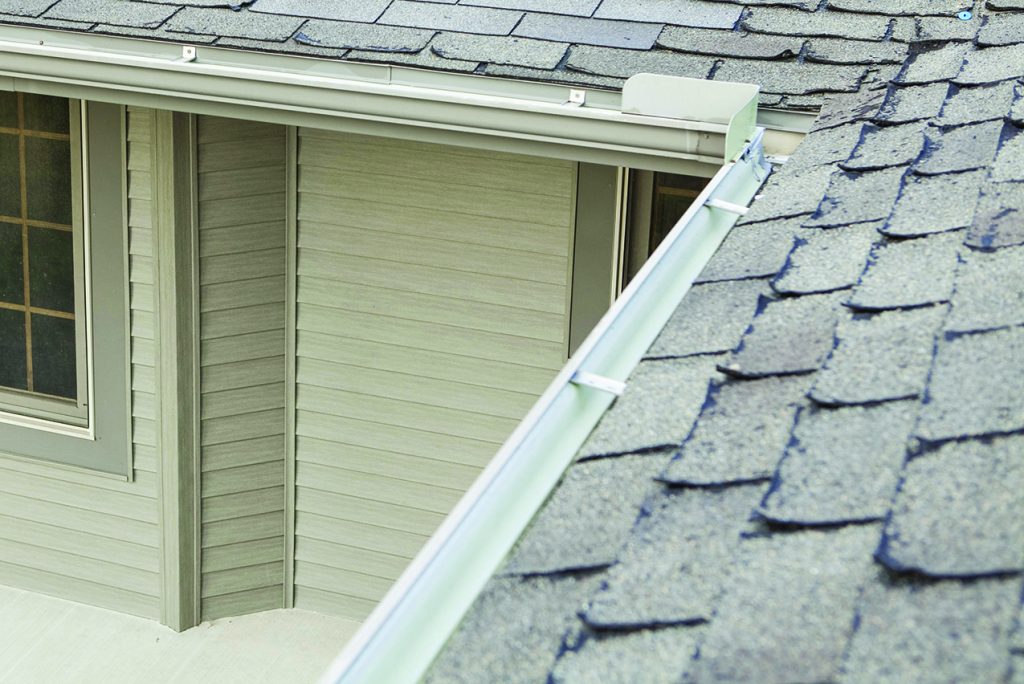
What to Know About Replacing Gutters
Certain home renovation projects are more glamorous than others. A remodeled kitchen is sure to garner its share of "oohs and aahs," while a newly paved driveway is much less likely to dazzle guests.
A gutter replacement is another job that might not have the wow factor. But fully functioning gutters are a must and can help to prevent potentially expensive roof damage. Gutters rarely draw attention, but homeowners can keep an eye out for signs that indicate gutters need to be replaced.
Signs gutters should be replaced
Various signs indicate it's time to replace existing gutters. Homeowners should act promptly if any of the following signs arise, as poorly functioning gutters can make it hard for water to get into the downspouts, ultimately pushing it backward and likely underneath roof shingles, where the result can be costly water damage.
· Peeling paint
· Cracks
· Pooling water in the gutter
· Mildew in the gutter, which can sometimes be seen even from the ground
· Water damage: Water damage on the gutter can be limited to certain spots and will be noticeable on the underside of the gutter
· Soffit damage
· Sagging gutters
· Detached gutters, which can be detached from other pieces or the house
· Rust
Who should replace gutters?
Many home improvements can be completed successfully by skilled do-it-yourselfers, but a gutter replacement is best left to the professionals. Homeowners who live in single-story homes may be able to replace gutters on their own, but the issues that can arise when gutters are not functioning at optimal capacity make this a job best suited to professionals, even in residences without high roofs.
Some gutters may be under a manufacturer's warranty, so homeowners can check to see if their gutters qualify for a free upgrade. Experience is one of the best reasons to work with a professional gutter installation team. Experienced professionals can identify which gutters are the best fit based on a host of factors, including the pitch of the roof, local conditions and the size of the house. In addition, gutter installation requires the use of various tools that many DIYers may not have on hand, which can cut into the cost savings of doing the project yourself.
Homeowners also should not underestimate the challenges of working on ladders that are high up off the ground. Professionals are accustomed to such challenges, while DIYers may not be comfortable or used to climbing ladders with materials and tools in hand.
A gutter replacement is a worthwhile investment that can ensure rain water efficiently and effectively runs through gutters and away from the roof. Leaving this task to the professionals can ensure the job is done right.


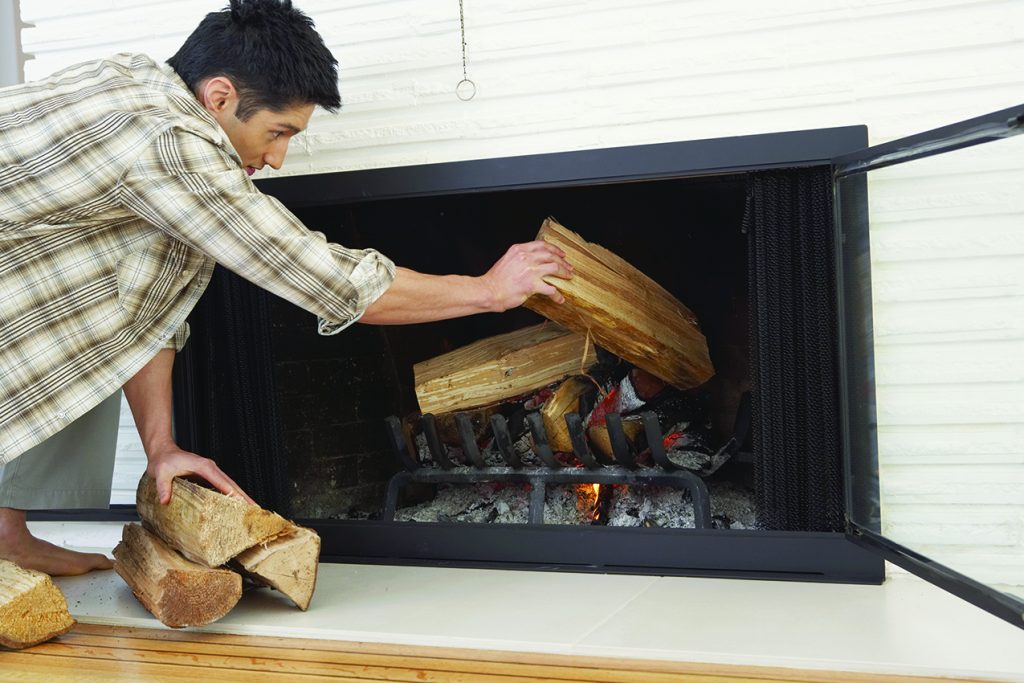
How to Prepare a Fireplace For the Winter
As hours of daylight shorten and fall gives way to winter, thoughts shift from fall foliage to spending time cuddling under warm blankets and being cozy indoors. A fireplace can improve the ambiance of any room and help to create a warm and welcoming gathering spot.
Home fireplaces typically are wood-burning or gas. Though maintenance for these fireplaces differs, certain preparatory steps must be taken to prepare a fireplace for winter.
Clear the clutter
Items can accumulate in areas that are not in use, and a fireplace is no exception. Take a few hours to remove any belongings from in front of the fireplace and clean the mantle thoroughly.
Have the chimney cleaned
Hire a professional chimney cleaning company to inspect the chimney and clean it thoroughly before winter. According to BobVila.com, a chimney should be cleaned once a year, or after about every 80 fires. The National Fire Protection Association says failure to properly clean chimneys is one of the leading contributors to home fires. That's due to creosote, a highly flammable residue that builds up in the flue that lines the chimney.
Inspect the interior
The interior of a wood-burning fireplace is likely lined with fire bricks. Check for cracks and loose joints. Hire a professional mason to make any repairs, as special materials are needed to withstand the heat of fires.
Install a chimney cap and screen
According to Family Handyman, a chimney cap is a protective covering that goes over the top of the chimney. It is made of steel or copper mesh with a cap on top. This protects the chimney from rain and downdrafts and keeps animals and debris from getting into the chimney.
Prune overhanging branches
If there are trees close to the home and the chimney, cut them back, as they can be a fire hazard. Branches and leaves also can restrict the proper draft of the chimney.
Assess the outdoor vent
Gas fireplaces typically emit exhaust through a vent in the home. Remove any blockages from the vent, including leaves, cobwebs and debris.
Check glass or other coverings
The glass or face of the fireplace helps regulate carbon monoxide exposure and protects people from the flames. Be sure the glass covering is intact.
Clean ceramic logs
Gas fireplaces use ceramic logs, rocks or beads that can become dusty. Clean them prior to use. Dirty ceramic logs can be a fire hazard and produce an unpleasant burning smell.
Check the blower and pilot
If the fireplace has an electric blower, clean and dust it so it doesn't become clogged. Inspect the pilot light for any wear and tear that includes wiring or structural issues.
It takes several steps to prepare fireplaces for cold weather seasons when they're most likely to be used with frequency.


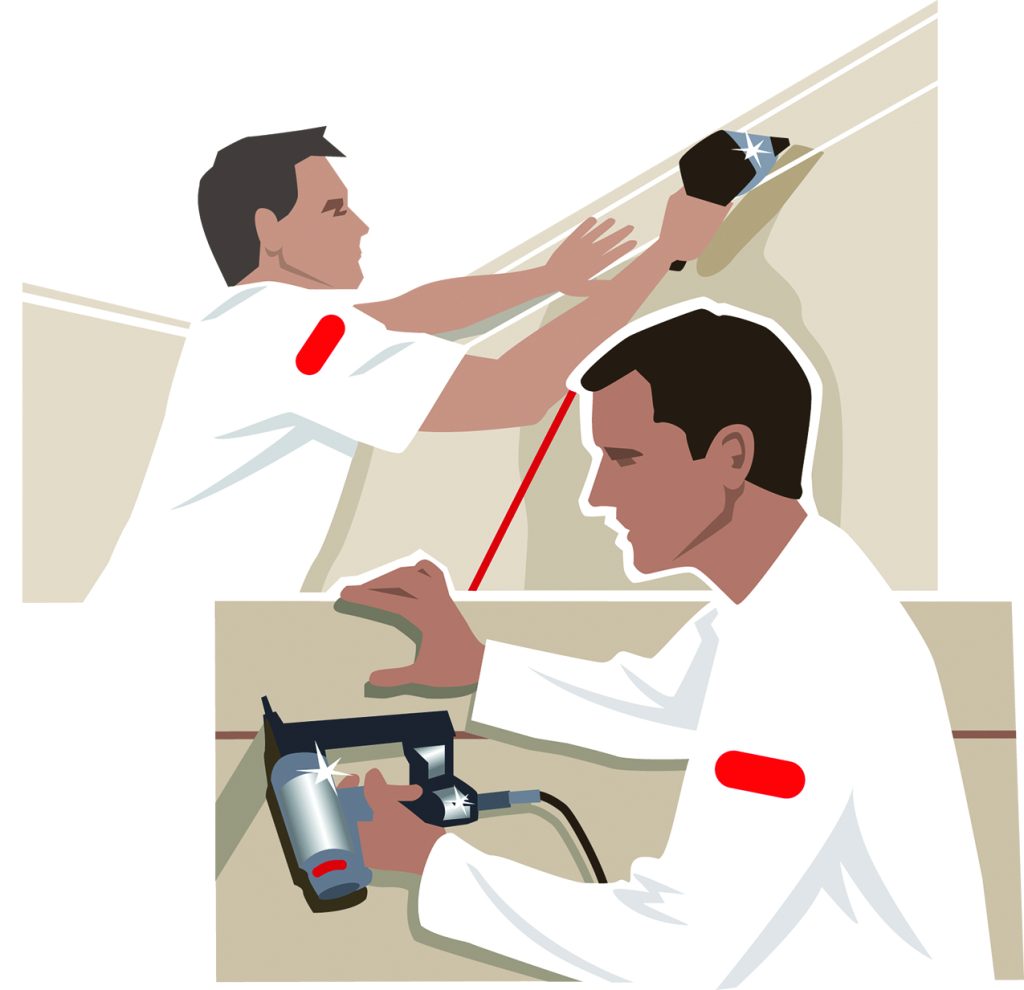
Small Renovations That Make a Big Difference
Home renovation projects were high on homeowners' priority lists during the early days of the COVID-19 pandemic. Throughout much of 2020, people across the globe were forced to spend much of their time at home as leaders and governments across the globe sought to prevent the spread of COVID-19. More time at home compelled millions of homeowners to invest more in their properties, thus sparking a renovation boom.
By early 2023, the renovation boom that marked the initial days of the pandemic appeared to have burst. In May 2023, the popular home improvement retailer Home Depot reported its sales had fallen by 4.5 percent in the first quarter of the year and that its income had fallen by more than 6 percent from the same period a year earlier. That marked the end of what Home Depot CEO Ted Decker characterized as "a three-year period of unprecedented growth" in the home improvement sector.
Home Depot's decline in sales was attributed to a number of factors, including a pivot among homeowners from large projects to smaller renovations. Inflation and the looming threat of a recession have led many homeowners to emphasize smaller projects. With that in mind, the following are some small renovations that can have a big impact.
· Storage addition: Regardless of where storage is added, be it the kitchen or a home office or a laundry room, extra space to keep items out of view can dramatically alter the look of a home. Unused kitchen walls can be transformed with some inexpensive, easily hanged shelves, while some laundry pedestals with storage drawers can help keep washrooms clear of clutter.
· Polish floors: Elbow grease might be the biggest expenditure when cleaning hardwood floors. The wood flooring experts at Bona® advise homeowners to polish their floors once every two to four months depending on how much foot traffic the floors get. A fresh polishing can make floors look brand new and ensures dirt and dust are not hanging around as uninvited houseguests.
· Paint: Painting is another inexpensive option for budget-conscious homeowners who want to update their homes. There's no shortage of places in a home, both inside and out, where a fresh coat of paint can make a statement without breaking the bank. Fading paint on bedroom walls and kitchen cabinets can be painted over with a fresh coat of the same color or even something more vibrant. Outside, apply a fresh coat to a wooden deck or paint over brick siding to create a whole new look.
· Molding: Crown molding can add a touch of elegance to any room. Rooms can be transformed in a single weekend with the installation of new or replacement crown molding. A simple molding installation is a task many do-it-yourselfers can handle on their own, while homeowners with less DIY experience may benefit from hiring a contractor to create a layered molding look.
Homeowners are pivoting away from costly renovations to more budget-conscious projects. Various less expensive undertakings can transform spaces at a fraction of the cost of more extensive renovations.


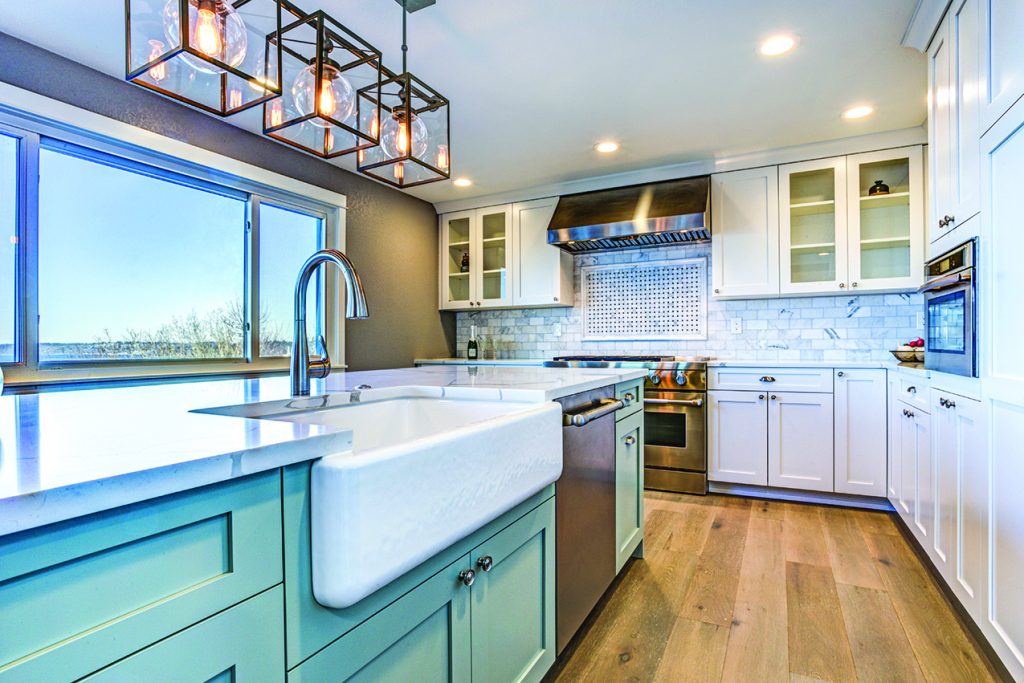
Kitchen Cabinets: Reface or Replace?
The kitchen is a busy room in many homes. That popularity likely has something to do with why so many homeowners spend sizable sums renovating their kitchens. According to highlights from the 2022 U.S. Houzz Kitchen Trends Study, the median spend on major kitchen remodels grew by 14 percent from the previous year, and minor remodels increased by 25 percent. Spurred on by increased time spent at home during the pandemic, the main impetus for kitchen remodels according to the study was that homeowners wanted to make these improvements all along and finally had the time and means to do so.
There are many aspects of a kitchen that homeowners can change. Houzz found 94 percent of renovators either fully or partially replaced cabinets in their improvement plans. Cabinets are a major component of kitchen layouts. Cabinets help to establish the aesthetic of a kitchen and serve a useful function, providing necessary storage space to ensure the room does not appear cluttered.
Homeowners have different options when it comes to cabinet renovations, and they may need to decide if they need to replace or reface their cabinets.
Replacement
Cabinet replacement involves removing all of the existing cabinets before new cabinets are leveled and installed. According to the home improvement resource The Spruce, homeowners can expect to pay between $13,000 and $30,000 for contractor grade cabinets. Cabinet replacement is a good idea when homeowners want to add more cabinet space or create a new layout in the room.
Refacing
Cabinet refacing is less messy and less disruptive than replacement. All cabinets remain the same size and in the same location. The cabinet boxes must be in good shape to facilitate a refacing. The process involves installation of new drawer fronts and cabinet doors, as well as veneering of the cabinet boxes. New hardware typically is installed as well. The insides of the cabinets typically remain the same. The Spruce says cabinet refacing can be 30 to 50 percent cheaper than a replacement.
Most people call in professionals to change their cabinets. Cabinet replacement can be a do-it-yourself job, but it involves measuring and ensuring everything fits and is leveled appropriately. Homeowners who choose to reface their cabinets themselves may opt to paint or restain. Wood veneer or a new door and drawer panel installation can be complicated and is best left to qualified contractors.


